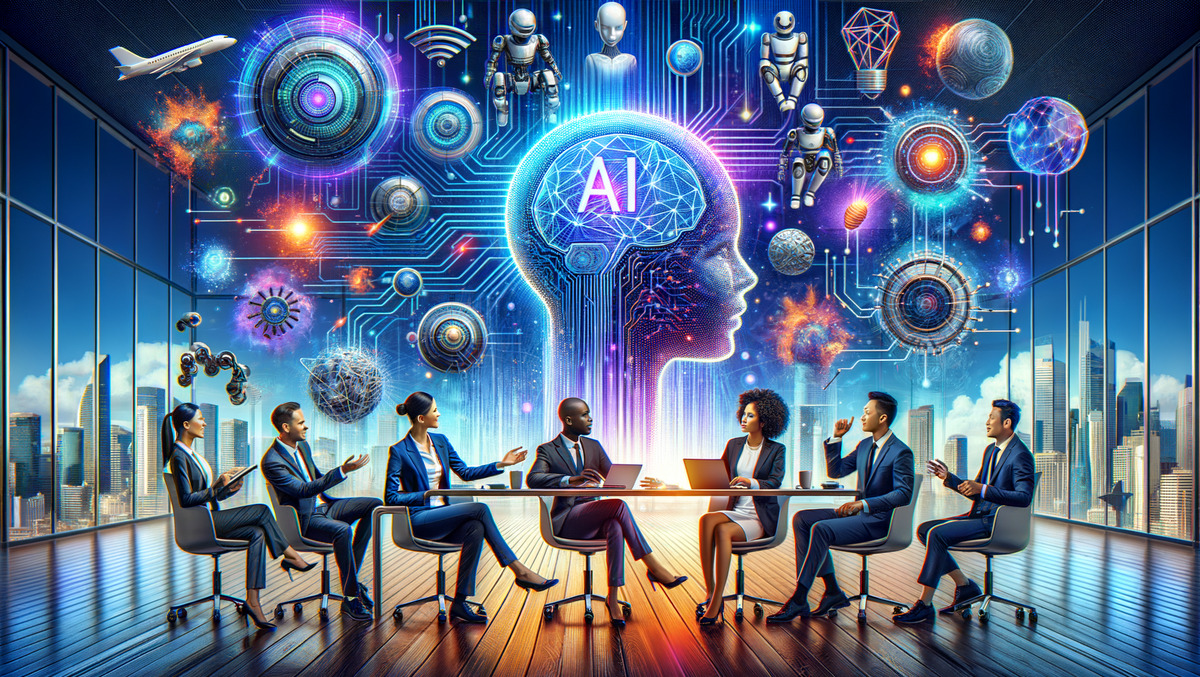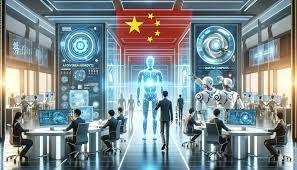How to Build Powerful AI Agents Without Writing a Single Line of Code
Artificial intelligence stands at the forefront of technological innovation, and AI agents have emerged as a revolutionary force reshaping how businesses operate in the digital landscape. The transformation of AI agent development from a complex, code-heavy process to an accessible no-code solution marks a pivotal moment in technological democratization. No-code AI agents represent the bridge between sophisticated automation and everyday business users, opening up unprecedented possibilities for workflow optimization and process automation.
We strongly recommend that you check out our guide on how to take advantage of AI in today’s passive income economy.
Table of Contents
Understanding AI Agents vs Traditional Chat Interfaces
The Evolution of AI Interaction
The journey from simple chatbots to sophisticated AI agents reflects a fundamental shift in how we interact with artificial intelligence. Traditional chat interfaces served as our first step into conversational AI, providing a glimpse into the potential of human-machine interaction. These early systems, while groundbreaking, operated within strict constraints that limited their practical applications in complex business environments. The emergence of AI agents represents a quantum leap forward, introducing capabilities that transform static chat interfaces into dynamic, action-oriented digital assistants.
The Limitations of Standard Chat Interfaces
Traditional chat interfaces operate within a confined space of interaction, primarily serving as conduits for information exchange between humans and language models. These systems excel at processing queries and generating responses based on their training data, but their functionality stops at the boundaries of conversation. The fundamental limitation lies in their inability to interact with external systems, maintain persistent memory, or take autonomous action based on user requests. This creates a significant gap between the potential of AI technology and its practical application in real-world business scenarios.
Knowledge Constraints and Training Data Boundaries
One of the most significant challenges faced by traditional chat interfaces stems from their reliance on static training data. These systems operate within a knowledge bubble that ends at their last training update, creating a temporal barrier that prevents them from accessing or processing current information. This limitation becomes particularly problematic in dynamic business environments where access to real-time data and current information is crucial for decision-making processes. When a system’s training data concludes at a specific point, such as April 2024, it cannot provide insights or information about subsequent events, market changes, or industry developments.
The Power of AI Agents: Breaking Through Limitations
Enhanced Capabilities and Real-World Integration
AI agents transcend the constraints of traditional chat interfaces by incorporating a sophisticated layer of functionality that enables real-world interaction and data processing. These advanced systems combine the natural language understanding capabilities of large language models with the ability to interact with external tools, databases, and applications. This integration creates a powerful synergy that allows AI agents to not only understand user requests but also take concrete actions to fulfill them.
The architecture of modern AI agents includes multiple layers of functionality that work in concert to deliver comprehensive solutions. At their core, these agents utilize advanced language models for understanding and processing user inputs, but their true power emerges from their ability to maintain contextual awareness across interactions, access and update external data sources, and execute complex sequences of actions across multiple systems and platforms.
Building Your First AI Agent
Essential Components of AI Agents
The construction of an effective AI agent requires careful consideration of multiple components that work together to create a cohesive and powerful system. These components include the core language model, integration frameworks, knowledge bases, and instruction sets that guide the agent’s behavior. Understanding how these elements interact and contribute to the agent’s capabilities is crucial for creating solutions that meet specific business needs and user requirements.
The Foundation: Selecting the Right Model
The choice of language model serves as the cornerstone of your AI agent’s capabilities, influencing everything from understanding user intent to generating appropriate responses. Modern language models like GPT-4 Omni and Claude offer different strengths and specializations that can be leveraged for specific use cases. The selection process should consider factors such as processing speed, contextual understanding, and the ability to handle domain-specific terminology and concepts.
These models have evolved significantly, incorporating advanced features like few-shot learning and improved context retention that enhance their ability to understand and respond to complex queries. The key lies in matching the model’s capabilities with your specific use case requirements, considering factors such as response time, accuracy, and the complexity of tasks the agent needs to perform.
Tools and Integration Framework
Expanding Functionality Through Tool Integration
The true power of AI agents emerges through their ability to integrate with and utilize external tools and systems. This integration layer transforms static language models into dynamic problem-solving systems capable of performing real-world tasks. The tool integration framework allows agents to interact with a wide range of applications and services, from simple data processing tools to complex enterprise systems.
Modern AI agents can leverage various types of tools, including data extractors, analysis engines, and automation frameworks. These tools extend the agent’s capabilities beyond simple text processing, enabling them to perform complex tasks like data analysis, content transformation, and system integration. The key to successful tool integration lies in creating clear interfaces and robust error handling mechanisms that ensure reliable operation across different scenarios.
Practical Applications and Use Cases
Content Repurposing and Marketing Automation
Content marketing represents one of the most powerful applications of AI agents, demonstrating their ability to transform and optimize content across multiple channels and formats. These agents excel at understanding the context and core messages of long-form content, then adapting that material for different platforms while maintaining consistency in tone and messaging.
The process begins with the agent analyzing the source material, whether it’s a long-form article, presentation, or other content type. Using sophisticated natural language processing capabilities, the agent identifies key themes, messages, and valuable insights. It then applies platform-specific formatting and style guidelines to create optimized content for different channels, from social media posts to email newsletters.
Advanced Workflow Automation
AI agents excel at streamlining complex business processes by automating repetitive tasks and coordinating activities across multiple systems. Their ability to understand context, make decisions based on predefined criteria, and interact with various tools makes them invaluable for workflow automation. These agents can manage everything from simple data entry tasks to complex decision trees that require multiple steps and conditions.
The automation capabilities extend beyond simple task execution to include intelligent process optimization. AI agents can analyze patterns in workflow execution, identify bottlenecks, and suggest improvements to increase efficiency. This level of automation intelligence helps organizations continuously improve their processes while reducing the burden on human resources.
Best Practices for AI Agent Development
Strategic Planning and Implementation
Success in AI agent development begins with thorough planning and a clear understanding of objectives. This involves analyzing business requirements, identifying potential use cases, and establishing clear metrics for success. The planning phase should consider factors such as user needs, system integration requirements, and potential scalability challenges.
Organizations should approach AI agent development as a strategic initiative rather than a tactical solution. This involves considering how the agent will fit into existing workflows, what training and support users will need, and how the agent’s capabilities can evolve over time to meet changing business needs.
Creating Effective Instructions and Guidelines
Developing comprehensive instructions for AI agents requires a balanced approach that provides clear guidance while maintaining flexibility for handling various scenarios. These instructions should define the agent’s role, establish specific goals, and provide detailed context about how to utilize available tools and knowledge bases.
The instruction set should include clear definitions of the agent’s boundaries, specific procedures for handling different types of requests, and guidelines for maintaining consistency in responses and actions. This framework ensures that the agent operates effectively while maintaining alignment with business objectives and user expectations.
Future Developments and Possibilities
The Evolution of AI Agent Capabilities
The future of AI agents holds immense promise as new technologies and integration possibilities emerge. Upcoming developments include enhanced natural language understanding, improved decision-making capabilities, and more sophisticated integration options with business systems and data sources. These advancements will continue to expand the potential applications of AI agents across different industries and use cases.
Community-Driven Innovation
The growing community of AI agent developers and users plays a crucial role in driving innovation and discovering new applications. Through collaboration and knowledge sharing, this community helps identify best practices, develop new use cases, and push the boundaries of what’s possible with AI agent technology. The collective experience and insights from this community contribute to the rapid evolution of AI agent capabilities and applications.
Preparing for the Future
Organizations looking to leverage AI agents should develop comprehensive strategies that consider both current capabilities and future possibilities. This includes establishing flexible frameworks that can accommodate new technologies and integration options as they become available. Success in the AI agent space requires a balance between immediate practical applications and long-term strategic planning.
The future will likely bring increased integration capabilities, more sophisticated decision-making algorithms, and improved ability to handle complex, multi-step processes. Organizations that establish strong foundations in AI agent development now will be better positioned to take advantage of these advances as they emerge.

We strongly recommend that you check out our guide on how to take advantage of AI in today’s passive income economy.




